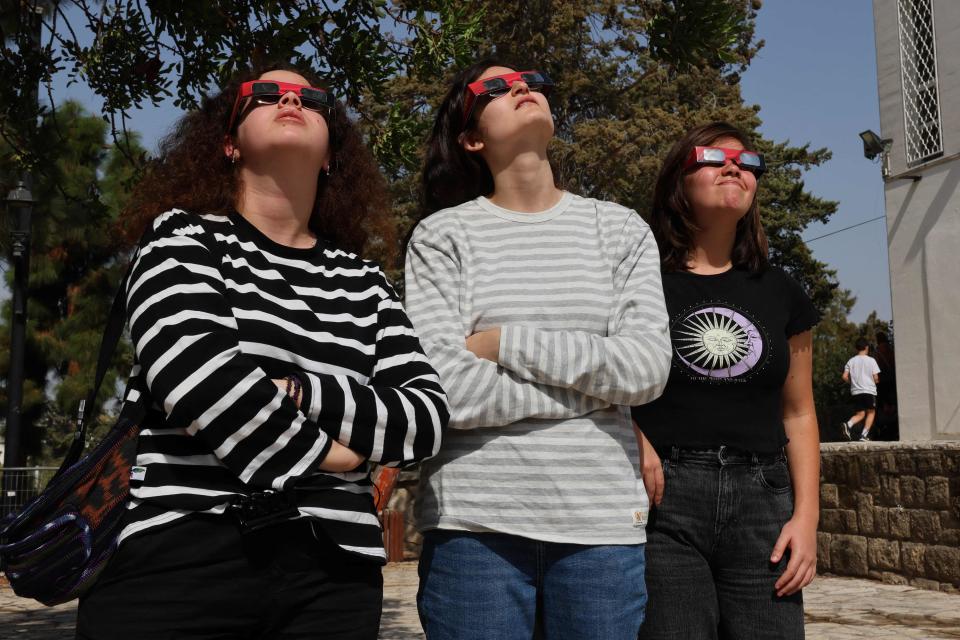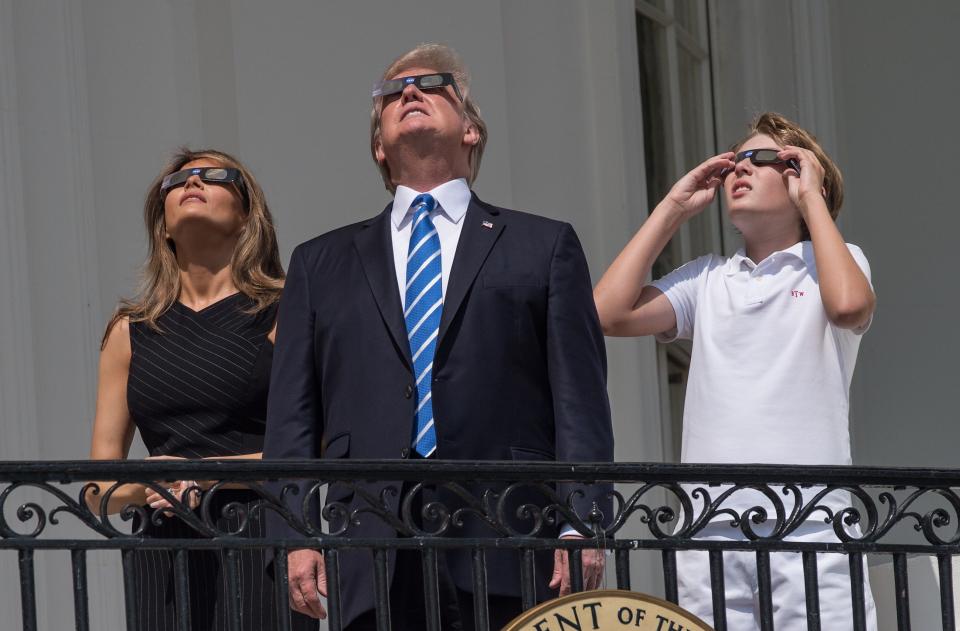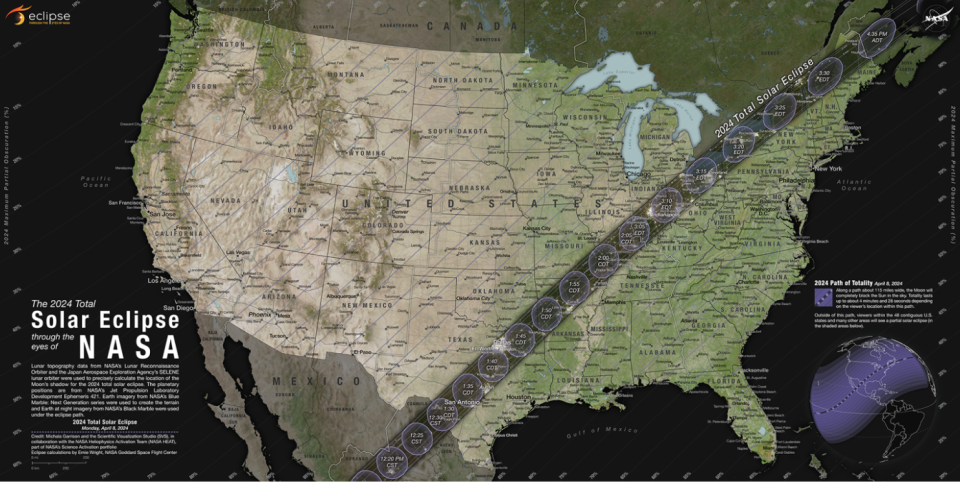How to safely watch the total solar eclipse: You will need glasses
For the first time in six years, a total solar eclipse will be visible for hundreds of millions of people across parts of the continental United States on April 8.
The 115-mile-wide path of the eclipse ? which happens when the moon passes between the sun and the earth, blocking the face of the sun ? begins over the South Pacific Ocean, and then will pass over Mexico, the U.S. and Canada.
In the U.S., the eclipse is set to cross from Texas to Maine, according to NASA's solar eclipse website.
The last time Americans witnessed a total solar eclipse, the sky darkened as if it were night, and the year was 2017. The next opportunity to experience a total solar eclipse is the U.S. is not until 2044.
If you plan to check out the eclipse, you are going to need protective eyewear. Here's what to know about safely watching the total solar eclipse without damaging your eyes:

Watching from national parks: You can see the total solar eclipse from national parks, but their skies offer much more
Can I look directly at the eclipse?
No. Do not look directly at the sun during a solar eclipse without specialized eye protection, NASA experts say. You could permanently damage your eyes or lose vision forever.
When watching the phenomenon, always observe with approved solar viewing glasses (AKA eclipse glasses) or a handheld solar viewer.
"Eclipse glasses are not regular sunglasses; regular sunglasses, no matter how dark, are not safe for viewing the sun," according to NASA.
A total solar eclipse can only be viewed without protective eyewear during totality ? when the sun is completely covered by the moon.

How long can you look at the eclipse without glasses?
You can view the total solar eclipse for a very short period of time without protective glasses. According to the U.S. space agency, the sun can be viewed safely with the naked eye only during the few brief seconds or minutes of a total solar eclipse – during totality.
"You’ll know it’s safe when you can no longer see any part of the sun through eclipse glasses or a solar viewer," NASA wrote on its website.
Explore these interactive maps to find the path of totality and duration of totality in those cities.

Where to buy eclipse glasses and how to know if they are safe
The American Astronomical Society has a list of approved solar-eclipse glasses suppliers.
To see the list click here.
According to space.com, ISO-approved glasses must meet the following requirements:
Both the right and left eye must be covered.
No more than 0.00032% of sunlight may be transmitted through the filters.
Filters must be free of defects including scratches, bubbles, and dents.
The product labels must include the manufacturer name, instructions for safe use and warnings of any dangers of improper use.
Can you use cameras, binoculars or telescope to look at the eclipse?
No. Do not use cameras, binoculars, or telescopes to look at the sun.
Capturing the eclipse: What to know about viewing and recording the solar eclipse with your cellphone camera
You can use a special solar protector on the front of those objects, but NASA recommends seeking advice from experts like an astronomer before using one.
Natalie Neysa Alund is a senior reporter for USA TODAY. Reach her at [email protected] and follow her on X @nataliealund.
This article originally appeared on USA TODAY: How to safely watch the rare total solar eclipse on April 8
